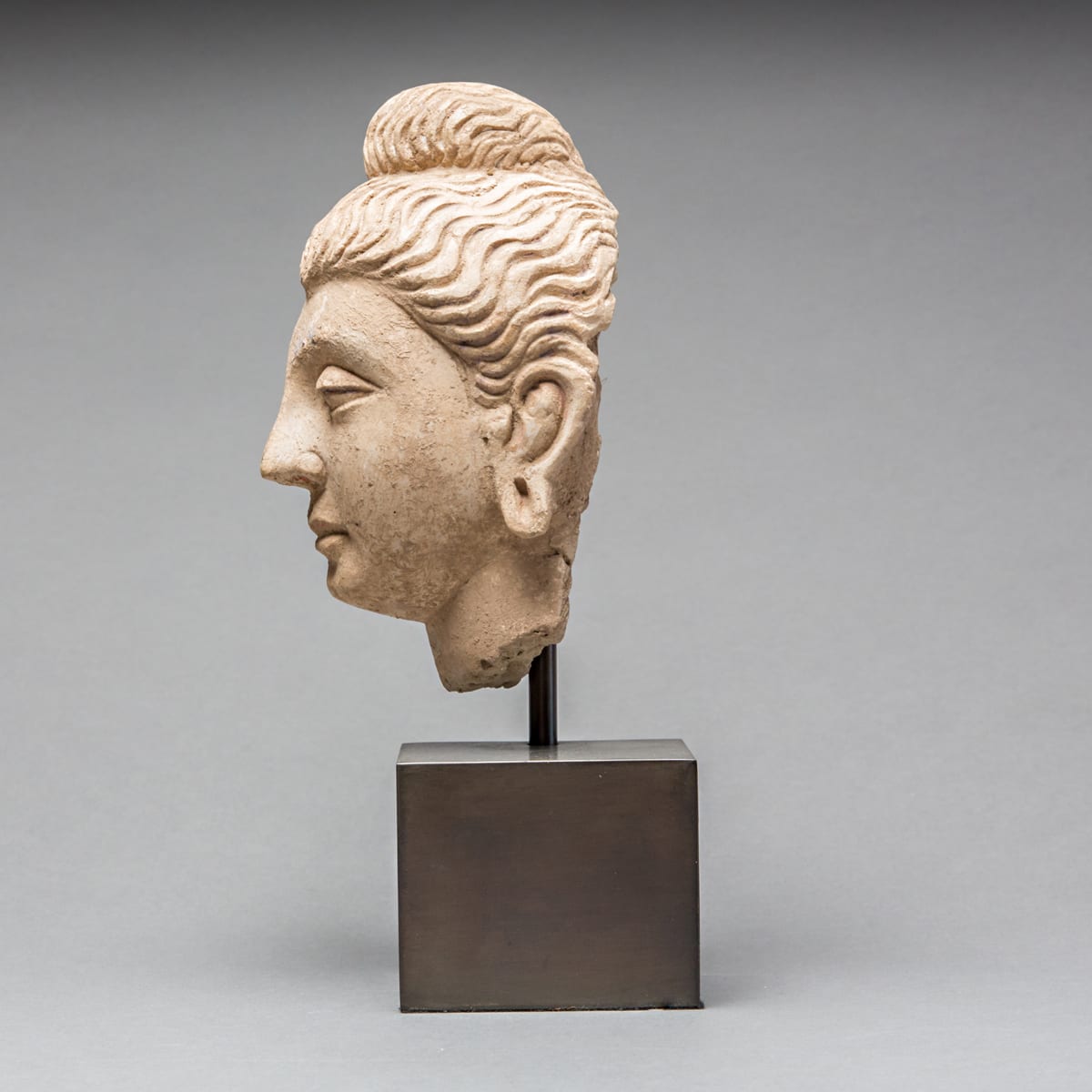Gandharan Stucco Buddha Head, 100 CE - 400 CE
Stucco
height 16.5 cm
height 6 1/2 in
height 6 1/2 in
AM.0222
Further images
The ancient civilization of Gandhara was located in the region encompassing modern northeastern Afghanistan and northwestern Pakistan. Situated at a confluence of trading paths along the Silk Route, the area...
The ancient civilization of Gandhara was located in the region encompassing modern northeastern Afghanistan and northwestern Pakistan. Situated at a confluence of trading paths along the Silk Route, the area was flooded in diverse cultural influences ranging from Greece to China. Gandhara flourished under the Kushan Dynasty and their great king, Kanishka, who is traditionally given credit for spreading the philosophies of Buddhism throughout central Asia and into China. This period is viewed as the most important era in the history of Buddhism. After the conquests of Alexander the Great, the creation of Greco-Bactrian kingdoms, and the general Hellenization of the subcontinent, Western aesthetics became prominent. Greek influence began permeating into Gandhara. Soon sculptors based the images of the Buddha on Greco-Roman models, depicting Him as a stocky and youthful Apollo, complete with stretched earlobes and loose monastic robes similar to a Roman toga. The extraordinary artistic creations of Gandhara reveal links between the different worlds of the East and West.
This small but refined carving depicts the head of the Buddha. The illusion of hair is created by evenly spaced ‘s’ shaped indentations in the stucco. The top-knot was regarded as a symbol of the Buddha’s wisdom and spiritual enlightenment. Small traces of the original polychromy survive. Red pigment is visible on the lips and inside the earlobes and the eyelids retain small amounts of black. The head is in excellent condition and will be highly prized by connoisseurs of Buddhist art.
This small but refined carving depicts the head of the Buddha. The illusion of hair is created by evenly spaced ‘s’ shaped indentations in the stucco. The top-knot was regarded as a symbol of the Buddha’s wisdom and spiritual enlightenment. Small traces of the original polychromy survive. Red pigment is visible on the lips and inside the earlobes and the eyelids retain small amounts of black. The head is in excellent condition and will be highly prized by connoisseurs of Buddhist art.







